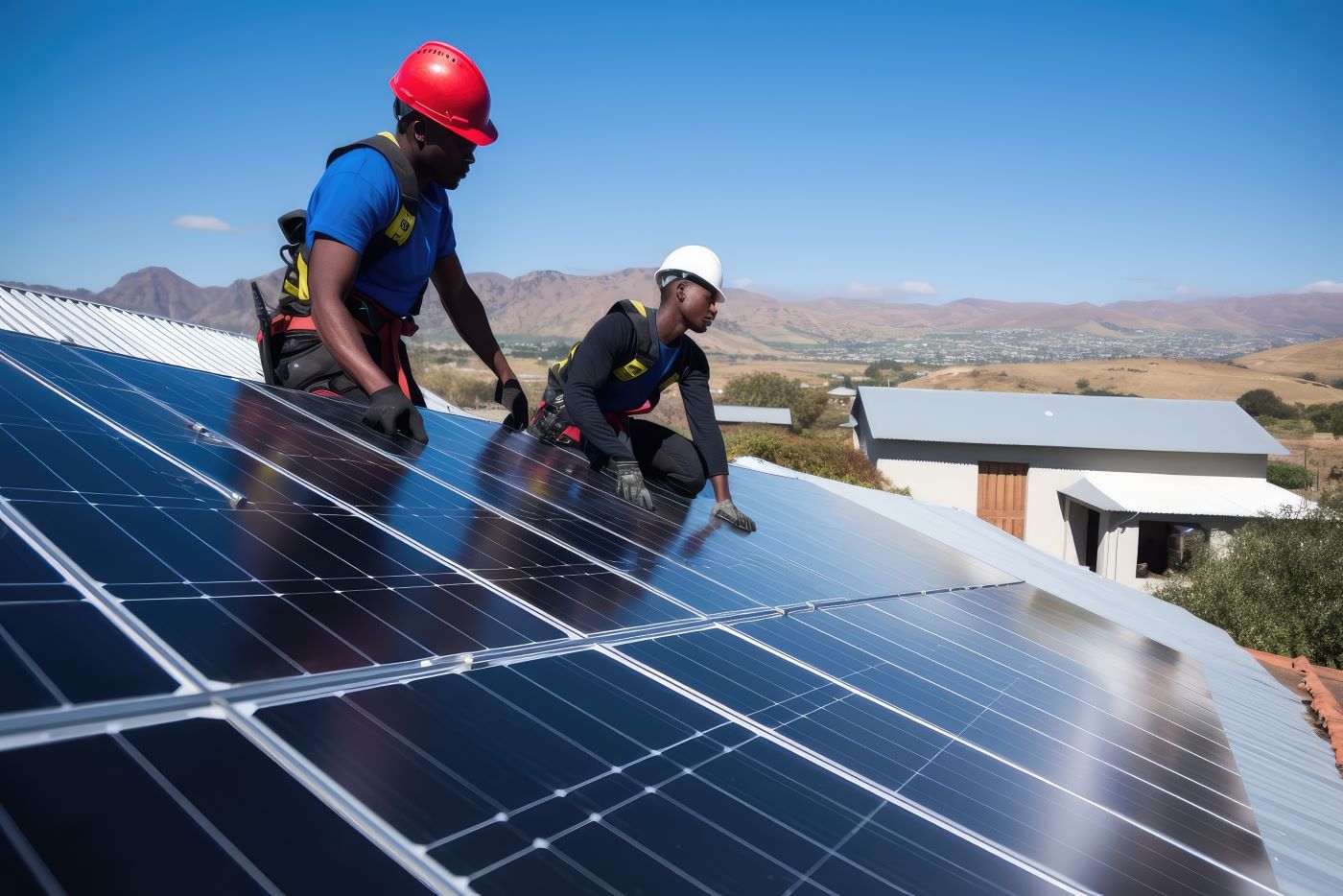Recommended
The principle of a “just transition” is anchored in the 2015 Paris Agreement. But only in recent years has this principle been fully recognized as an enabler and accelerator of coal power decarbonization efforts. A just transition integrates decarbonization efforts with measures to mitigate the direct, indirect, and induced adverse impacts of the transition on the workers and communities who depend on the fossil fuel value chain.
In a paper released today, we look at progress and challenges to date in the first two JETPs, in South Africa and Indonesia. As previewed below, the paper finds that while the JETPs for South Africa and Indonesia appear to offer a blueprint for moving away from coal in their respective contexts, barriers, risks, and gaps call into question whether the targets are achievable at the planned pace and scale. In a related note, we summarize our paper’s finding in more detail, but here’s a snapshot of the findings:
What is a JETP?
Just Energy Transition Partnerships (JETPs), first announced at the 2021 UN Climate Change Conference, are a novel plurilateral and long-term approach driven by the G7 to support climate actions in carbon-intensive developing countries at risk of being locked in to a high-carbon future by barriers limiting progress to low-carbon goals. Through JETPs, large finance packages are offered to finance country-led just power sector decarbonization strategies that reflect enhanced climate ambition and related development priorities, including realizing countries’ energy access agendas and developing low-carbon energy value chains. The launch of the US$8.5 billion JETP for South Africa in 2021 and the US$20.0 billion JETP for Indonesia in 2022 (the world’s 15th and 10th largest carbon emitters in 2021) provided important momentum.
The JETPs have helped to raise ambition and attract the government attention and ownership needed to deliver such strategies. If South Africa’s JETP is implemented as planned, the country is forecast to reach its lowest emission level as included in its enhanced Nationally Determined Contribution. Under Indonesia’s JETP, the country will achieve early peaking of carbon emission, with its power sector reaching net zero 10 years ahead of time and the share of renewables in its power generation mix rising to 34 percent by 2030.
Beyond environmental benefits, both countries are forecast to benefit from the green transition through the creation of decent jobs, economic diversification, and an impetus for low-carbon sustainable growth.
What are the strengths and risks of the JETP approach?
JETPs face challenges that will need to be overcome if they are to reach their potential. JETPs establish a platform for dialogue and lay a foundation for the “extreme teamwork” among key stakeholders and co-creation of solutions that is needed to address climate change. Some of our findings:
- Long lead times for grid development that risk foiling an accelerated deployment of renewables and decommissioning of coal plants can, at least in part, be bridged by establishing new renewable power plants first at locations where coal assets are being decommissioned to redeploy freed-up grid assets. While these locations may not coincide with the best solar and wind potential, it supports just transition efforts of the countries to develop new, clean power plants in these locations. Hence, the apparent trade-offs between speed of the energy transition on the one hand, and reliability and cost efficiency on the other hand can offer opportunities to advance a just transition.
- The affordability and effectiveness of the JETP largely depend on the level of concessionality of the funding package provided by the International Partners Group. But it more importantly depends on how concessional funds are used to mobilize private sector funding.
Indonesia’s innovative JETP leads the way in mobilizing the partnerships and financial innovations often needed to address climate change. The joint offer of public and private financial institutions’ commitments transforms private financial institutions from co-financiers into knowledge solutions partners that contribute their structuring expertise to deliver effective financing solutions for the transition. In addition, the JETP effectively leverages the role of the multilateral development banks in mobilizing private capital. Partners channel concessional public finance through an innovative catalytic financing platform that aims to mobilize private and philanthropic financing to package tailored blended finance solutions.
Yet, derisking solutions offer no shortcut around sector reforms. To overcome barriers, maintain momentum, and ensure affordability, partners will need to work together and support South Africa and Indonesia in finalizing sector reforms, getting prices right, and devising effective business models.
Policy alignment, transparency, and accountability can strengthen the JETP’s cost-efficiency and effectiveness.
- Much of the discussions of the JETP focuses on the phase-down of coal and the decarbonization of the power sector through renewable energy. Yet, the principles of cost efficiency in this green transition should not be neglected. The International Energy Agency clearly explained in Net Zero by 2050 the cost-effective elements of the energy transition. JETP plans must clarify how they align with other decarbonization plans.
- Achieving a rapid increase in the share of renewable energy in Indonesia will also depend on demand-side incentives. Cost efficiency and speed of the transition will depend on effective policy coordination mechanisms across sectors such as trade, and industrial policies and levels of government. Here, South Africa’s institutional set-up of a Presidential Climate Change Task Force for planning and implementing the JETP can serve as an example to drive progress and ensure policy alignment.
- The transition process in the decades to come will not only affect workers and communities dependent on the fossil fuel sectors. Energy prices are set to rise. Given the cost-of-living crisis and heightened food insecurity, garnering the support for the transition will require transparent and constant communication. Currently missing is a comprehensive analysis of all cost and all benefits. To date, costs are better highlighted than benefits. A more comprehensive analysis is needed.
Long-term commitment to the partnership should be strengthened if JETP expectations are to be met.
- Funding by international partners as indicated in the JETP Investment Plan for South Africa will be fully absorbed to support the just transition in the power sector. But recipient countries are expecting to leverage the partnerships to achieve support to their low-carbon value chain development. Indonesia and South Africa are both richly endowed with critical minerals to champion the green transition. JETP partners should not just mobilize private finance to complement their public finance packages, but also technology and innovation partnerships to support recipient countries’ economic diversification ambition. This can strengthen long-term commitment of recipient countries to those partnerships and demonstrate potential economic benefits from a green transition.
Disclaimer
CGD blog posts reflect the views of the authors, drawing on prior research and experience in their areas of expertise. CGD is a nonpartisan, independent organization and does not take institutional positions.
Image credit for social media/web: michaeljung / Adobe Stock







